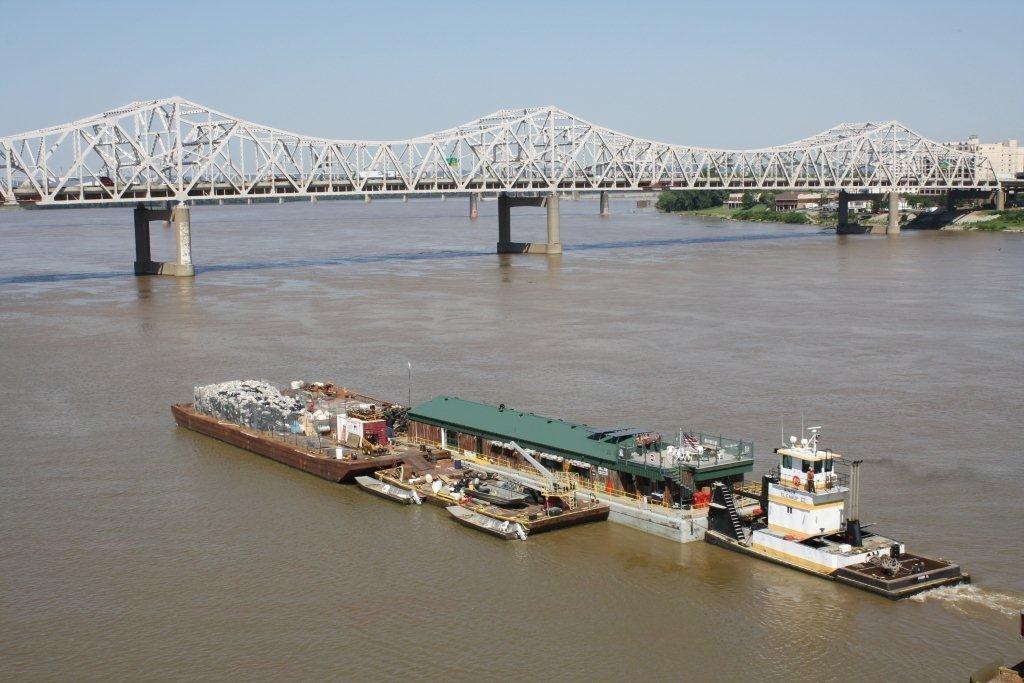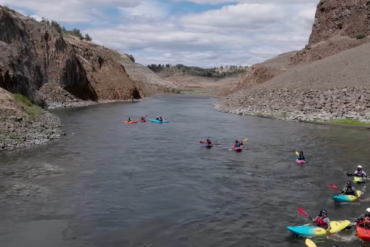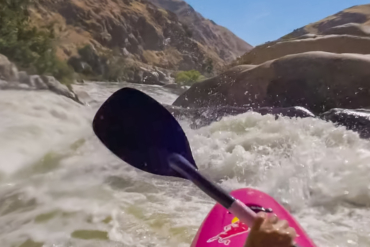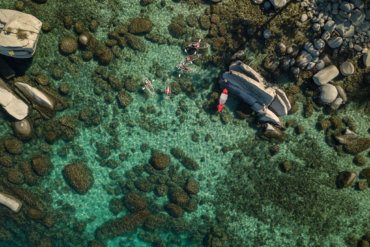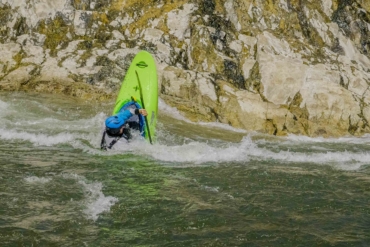Chad Pregracke lives on a barge. His life’s work is to clean up the Mississippi River, which flowed near his childhood home and now floats a 150-foot vessel he uses to scour trash nine months of the year.
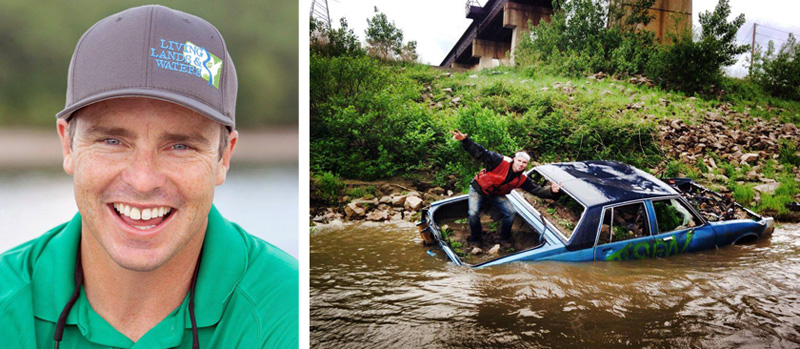
It’s a daunting task. But Pregracke is hardly alone — since founding Living Lands & Waters in 1998 thousands of people have volunteered to clean the river. Many live aboard the barge for days or weeks at a time immersed in projects, pushing to help make the Mississippi clean again.
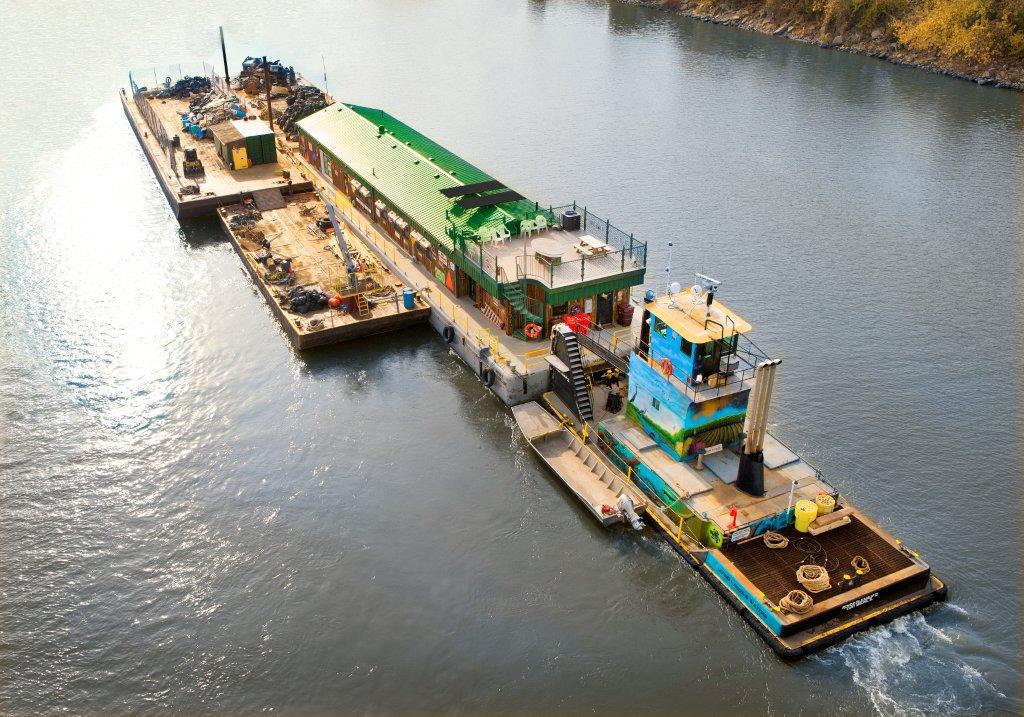
This includes removing more than 67,000 tires. That’s Pregracke’s estimate on the number he and his volunteers have liberated from the river, the world’s fourth longest at more than 2,300 miles.
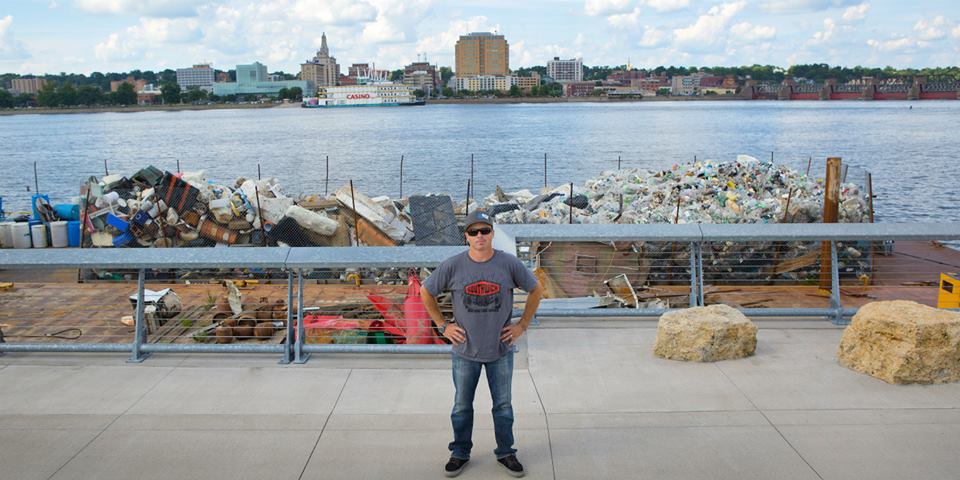
Today, the non-profit has expanded operations to the Ohio, Illinois, Missouri, Potomac and Anacostia Rivers. It’s also planting trees by the hundreds of thousands to reduce erosion along rivers and working with educators to inspire a new generation of conservationists.
Preracke, 39, has received awards for his work, including a CNN “Hero Of The Year” designation in 2013.

We were introduced to Preracke by KEEN. Living Lands & Water was a $10,000 grantee of the KEEN Effect — the company’s fan-based active grants program — earlier this year.
Pregracke took a few minutes off the barge last week to talk about his river home, environmental concerns, and some of the adventures he’s seen over the decades as a “river rat” on the Mighty Mississippi. —Sean McCoy

GearJunkie: First, something fun: What’s the weirdest thing you’ve pulled from the river?
Chad: Probably moneybags from a bank robbery! The thieves had taken all the money and thrown it over a bridge in St. Paul. On the other side of the island we found a square, football-size object wrapped in plastic — it was surveillance tape from the robbery. I turned it in and they caught the robbers.

What is Living Lands & Waters focusing on today?
We’ve put a lot of effort into the Million Trees program. We gave away 739,000 trees in the last five years, opened a nursery, and initiated an invasive species removal program.

What months are you on the river, working from the barge?
The barge runs from February through late December. It works anywhere from St. Paul to New Orleans. It has 13 full-time paid staff on board.
What evidence of human activity and pollution is most obvious on the river?
The most obvious sign of humans is siltation from all the fields. The whole river is silty. As far as garbage goes, tires are the main thing, and Styrofoam.

How could people change this?
People need to leave buffer strips of vegetation between streams and fields. That makes a huge difference. There’s just so much silt, it chokes a lot of stuff, everything from spawning beds for fish, to plant life to mussels. Silt essentially turns a river into one big desert.

What’s the most common thing pulled from the river?
Tires. We’ve pulled tens of thousands out over the years.
How does the river change month to month?
It changes not just month to month but day to day. It’s high, low, fast, slow, wavy or choppy or glass. You can predict how it’ll change but you never really know. In spring, it’s high, but sometimes it can stay high all summer.

What’s your favorite stretch of the river?
Where the Illinois River and Mississippi meet. You can ride a bike right along the river. It’s one of those places that many don’t know about but one of the best views in the Midwest.
What’s the biggest fish you’ve seen in the river?
My brother caught two 100-pound catfish in one day. They looked like twins. One of them is on my wall. We only eat the smaller ones.
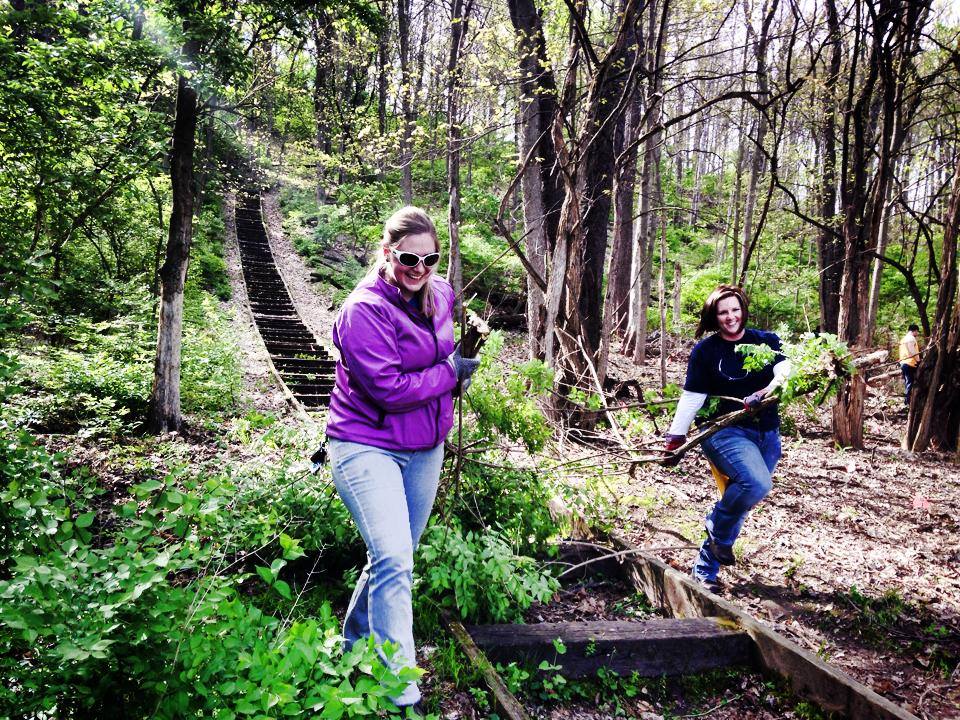
What’s the coolest bird on the river?
The osprey. It’s really cool to see the osprey. The pelicans have come back, too. It’s amazing to see them hunt in teams.
What can people do to help make the Mississippi healthy?
More than anything, visit it! If you’ve got adventure time, travel the upper Mississippi River. You can help it just by visiting and getting to know the river. It really is a national treasure. It’s got seven national parks along its banks. The entire river from Dubuque, Iowa, on up is spectacular. The area around St. Louis is great to visit, too.

What’s the best way to see the Mississippi?
Visit by car or motorcycle, or you can get in a canoe. Houseboats can be a great way to see some parts of the river. You can walk by it, swim in it. Just get there and check it out!
—Learn more about Living Lands & Waters at the organization’s website and Facebook page.
